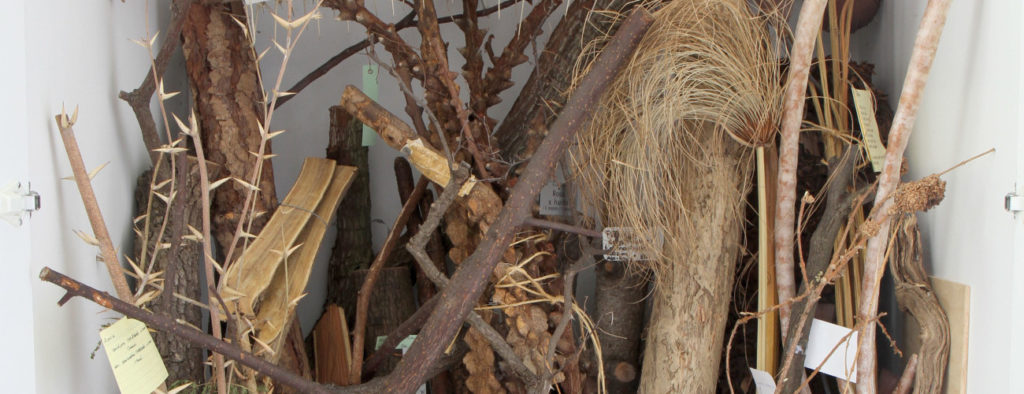Botanical collections
Botanical collections

In addition to the collections of living plants, the University’s botanical collections also include the Herbarium Erlangense, a research collection, and the Museum Botanicum Erlangense, a historical teaching collection. In a herbarium dried plants are secured to sheets of paper and labelled with the location and date of where they were found and the person who found them. The samples collected in herbariums are essential for
plant systematics and for evaluating biodiversity. They can also be used to track changes in the areas where specific species grow over the course of the centuries. The Herbarium Erlangense was founded by Wilhelm D. J. Koch in 1825. It is one of the largest herbariums in Germany, with over 170,000 samples from all over the world. Objects in the collection are swapped and loaned internationally and the collection is currently being digitalised. The Museum Botanicum Erlangense collection was first mentioned in 1851 by Adalbert Schnizlein and was used for teaching in botany. As it was intended to be used for teaching on all aspects of plant life, the historical material is very diverse. The wide range of wet and dry preparations, seeds, fruits, fibres, cross sections of trunks, palaeobiological artefacts, historical charts and models are regularly used in exhibitions.
Websites:
Herbarium Erlangense
Address
Herbarium Erlangense
Staudtstr. 5
91058 Erlangen
Contact
Prof. Dr. Werner Nezadal/Almut Uhl
herbarium@biologie.uni-erlangen.de
+49 9131 8528032
Tours available upon request
Museum Botanicum Erlangense
Address
Botanical Garden
Loschgestr. 1
91054 Erlangen
Contact
Katrin Simon/Dr. Walter Welß
botanischer-garten@fau.de
+49 9131 8522956
Tours available upon request